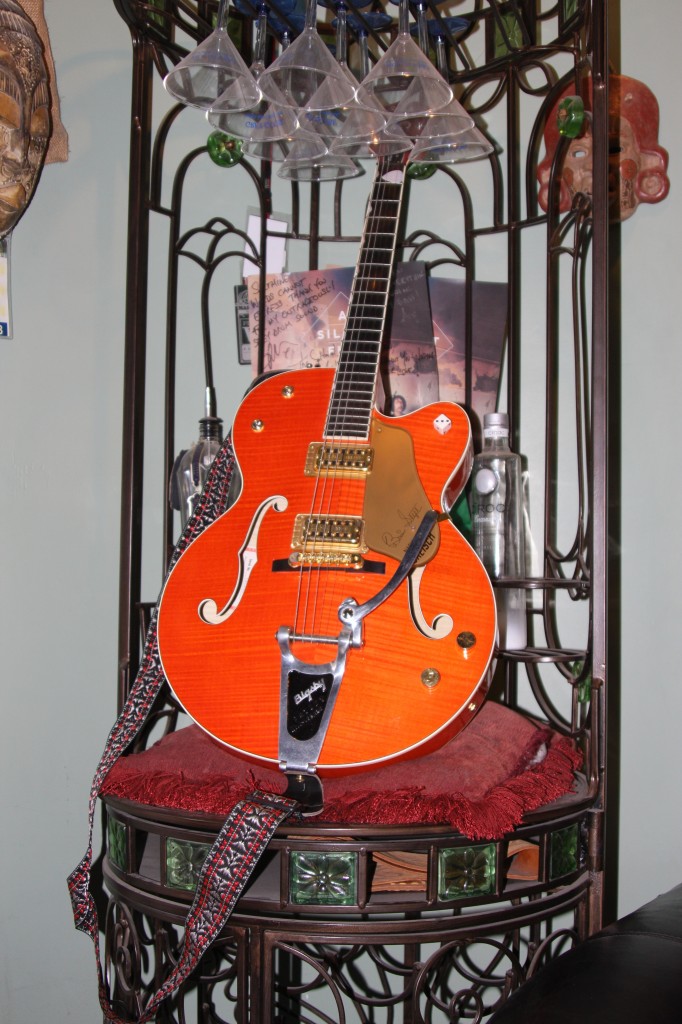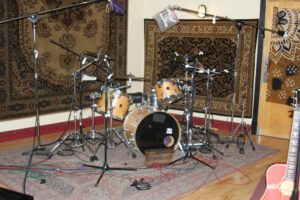Project and Full Studio Elephants
I have been in over 12 project and full studios in the last few months and there is one issue that plagues them all. Each studio type has at least one room in a full studio and the whole room in a project studio that has some low frequency energy resonances. It is the lower frequency ranges that are the sleeping elephant in every room. Well, most of the time, the elephant is not sleeping but trumpeting always without much provocation. Our elephant usually lives in the 30 -100 cycle range.
Lots Of Music
There is a lot of musical information within this frequency range. It is the frequency range that plays the most havoc with our professional monitoring and control rooms. It destroys any balance in our listening rooms and can smother and blur everything with unwanted sound pressure resonances.
Bass, Toms, and Kick
It is also the most critical area for all of our energy from the lowest string on our acoustic or electric guitar, say around 80 Hz. Bass guitar follows in this same region with a start at around 35 Hz. Our tom and kick drums are also located in this neighborhood. Toms start around 50 Hz. with kick drums beginning at 30 cycles. These notes provide the track for the music train to run on.
Air Guitar
All of these instruments provide the driving force behind and underneath our middle and high frequencies. Well, at least our middle frequencies. Highs seem to have a mind of their own. They make our feet tap and cause our hands to move, like they are playing a bass guitar even though we have no knowledge on how to do that. Low frequency notes in our music deserve more room respect than they currently receive.
Lets Go Hunting
.
We have three “weapons” we can use for our low frequency resonance reduction. I use the word reduction on purpose. Room dimensions dictate the resonances that will occur and at at what frequency. Only changing room dimensions will eliminate a low frequency resonance. Unless you have a room with at least a 30′ length, you have no way with add on room treatment technologies to have a room that is flat down to 20 Hz. All one can do is manage or reduce the amplitude of the resonance.
Resonant Cavities
We have two, low frequency services at our disposal. We have resonant cavities and resonant panels. Resonant cavities are large devices and require a lot of surface area. They are a cavity that is calculated to have a certain volume that will resonant at a frequency that is low enough to absorb the resonant frequency. Resonant cavities are too large of a low frequency device for a project studio where space is critical.
Resonant Panels
Resonant panels are easier to work with because they can be free standing or wall hanging. They also can be designed and built to absorb a lot of energy in a small amount of space. They are built by using a sealed box that has a front panel or diaphragm that moves when sound pressure strikes it. This diaphragm movement slows the wave down as it moves into the cabinet.
Cabinet Fill Material
Inside the cabinet, it will meet an internal cabinet fill that is designed to absorb all the resonant activity within the cabinet. The internal fill material must also be able to assist in absorption of other energies other than existing cabinet resonances. If a proper material is chosen for the internal cabinet fill, one can achieve a large amount of absorption in a small amount of space.
Depth And Density
The depth of the cabinet and the density of the material used to build the resonant panel or cabinet are ones that need to be chosen carefully. There is an acoustical relationship between density and distance. The cabinet density or mass influences how low the absorber will go down to absorb. This is called the panels resonant frequency. Frequencies above the resonant frequency will be absorbed, those that fall below will not.
Diaphragmatic Absorption
Diaphragmatic absorption is another name for a resonant panel absorber. A diaphragmatic absorber has a front wall or diaphragm that moves in sympathy to the amount of sound pressure exerted upon it. It also has a cabinet and face panel that have a certain density or mass. There is a statistical relationship between these two pieces. The cabinet material density has to be greater than the density of the face panel by a certain factor.
Internal Cabinet Fill
The internal cabinet fill material must also be considered as a critical part into the total cabinet’s performance. It is the most important factor in determining the cabinet’s rate of absorption. The cabinet’s depth and density contributes to the cabinet’s achieving a certain resonant frequency. The front panel’s density and method of installation and construction go hand in hand with the cabinet’s resonant frequency.
SPL – Sound Pressure Please
Resonant panels or diaphragmatic absorbers work with sound pressure. They all need sound pressure to activate or resonate. They require it in order to perform. They perform well when the pressure is high and they work well in locations of the room where these higher amplitudes reside. Corners of our rooms and the intersections of the floor, ceiling, and walls are good high pressure areas. Try to distribute low frequency absorption around the room and not concentrated into one area of the room.
Both small and full room project studios suffer from low frequency issues. The frequencies from 30-100 cycles in our rooms contain a lot of musical energy that is necessary in our recordings and playback environments. It must be heard clearly and well defined. We can use a resonant cavity if we are building a room. However, for small room acoustics we must use a resonant panel that can be designed to achieve a certain resonate frequency above which energy can be absorbed. A diaphragmatic absorber is an example of a resonating panel. Rent a hand truck to position the diaphragmatic absorbers in place. They can weigh over 200 lbs.







